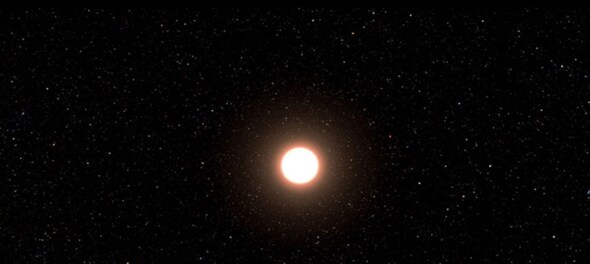
The National Aeronautics and Space Administration’s (NASA) James Webb Space Telescope (JWST) has made its first major discovery of 2023. The JWST has managed to identify the presence of a planet orbiting another star roughly 41 light years away. The exoplanet, classified as LHS 475 b, is nearly the same size as the Earth and is a rocky terrestrial planet. This is the first exoplanet that the team behind the JWST has positively identified, making it a milestone for the project.
An exoplanet is a planet that orbits another star.
Data from NASA's Transiting Exoplanet Survey Satellite (TESS) indicated that there could be a planet present in the system. Using JWST’s Near-Infrared Spectrograph (NIRSpec), scientists observed the star and realised that a planet was orbiting it.
ALSO READ:
“There is no question that the planet is there. Webb’s pristine data validate it,” said researcher Jacob Lustig-Yaeger, one of the co-leads of the research team.
The star that LHS 475 b orbits is a red dwarf, a type of star that is at the very end of its life cycle. Much dimmer and cooler than at any other stage of its life, red dwarfs are the most common stars found in the galaxy. So, despite the planet orbiting the star much closer than even Mercury’s orbit around the Sun, LHS 475 b remains in the possible ‘goldilocks’ zone of habitability. The close orbit does mean a year in just two Earth days.
Using the NIRSpec, scientists were also able to determine a few aspects of the planet’s atmosphere. Firstly, it can be concluded that it doesn’t have a heavy methane-based atmosphere. The team can’t yet say for certain whether the planet has a carbon dioxide-based atmosphere like Venus or a barren atmosphere like Mars yet.
“The telescope is so sensitive that it can easily detect a range of molecules, but we can’t yet make any definitive conclusions about the planet’s atmosphere,” explained Erin May, one of the researchers on the team. Additional data that the telescope managed to capture has revealed that LHS 475 b is at least a few hundred degrees warmer than the Earth.
The discovery of the rocky planet highlights the impressive sensitivity of JWST while also allowing scientists the opportunity to see what rocky Earth-sized planets outside of the Solar System behave like.
(Edited by : Sudarsanan Mani)
Check out our in-depth Market Coverage, Business News & get real-time Stock Market Updates on CNBC-TV18. Also, Watch our channels CNBC-TV18, CNBC Awaaz and CNBC Bajar Live on-the-go!


Lok Sabha elections 2024: Banks and schools to remain closed in these cities for phase 2 voting
Apr 25, 2024 5:33 PM
Andhra Pradesh Lok Sabha elections: Seats, schedule, NDA candidates and more
Apr 25, 2024 5:16 PM

